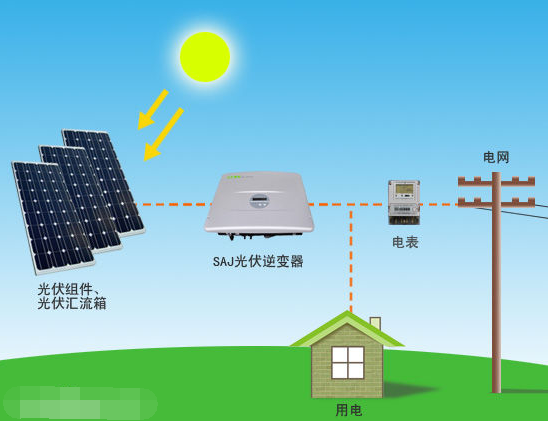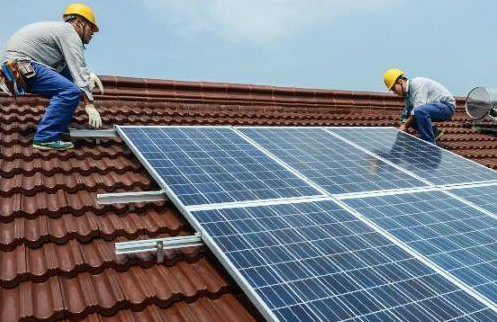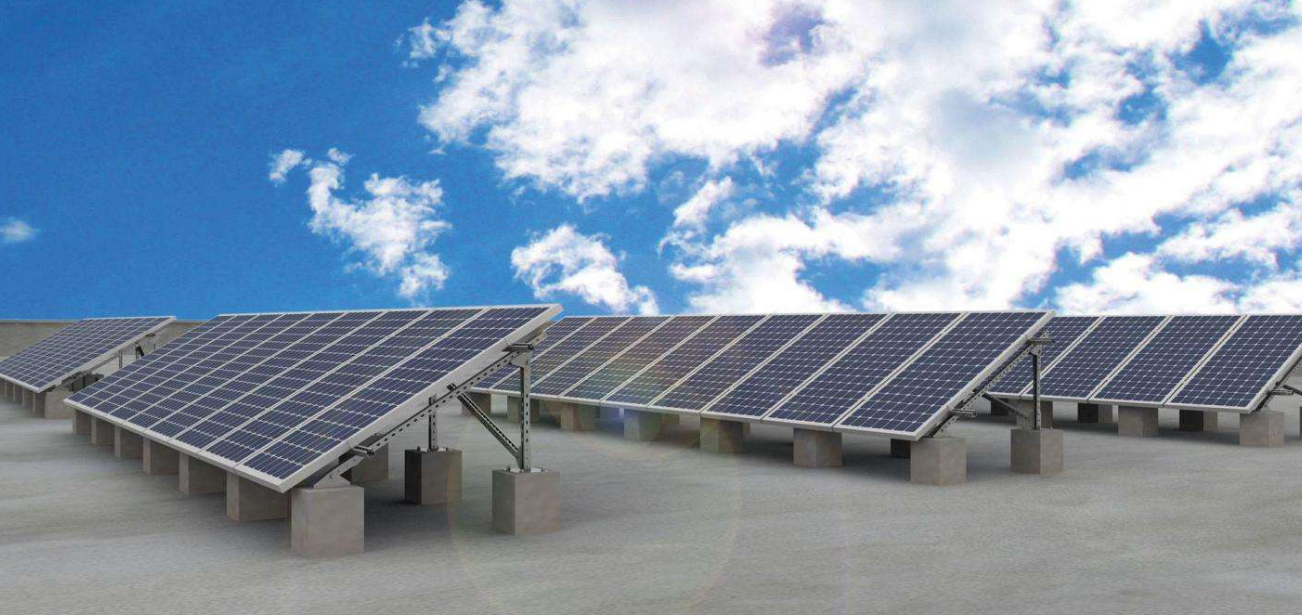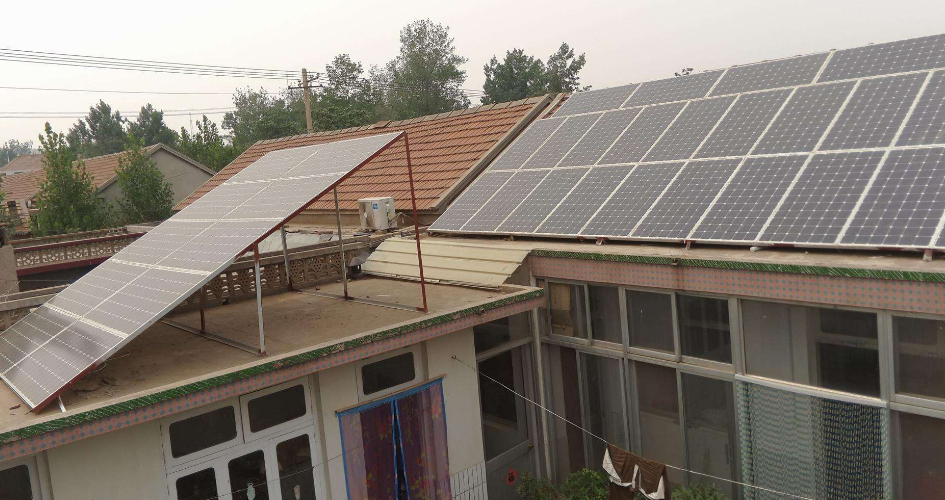Photovoltaic power generation is a technology that directly converts sunlight into electricity using the photovoltaic effect of semiconductor materials. It typically consists of three main components: solar panels, a controller, and an inverter. The system is made up of various electronic parts. Solar cells are connected in series and encapsulated to form large-area solar modules, which are then combined with a power controller and other elements to create a complete photovoltaic power generation system.
The core principle behind photovoltaic power generation is the photoelectric effect in semiconductors. When light (photons) hits a material, it can transfer its energy to electrons within the material. If the energy is sufficient, these electrons can escape the surface as photoelectrons. Silicon, for example, has four outer electrons. By doping pure silicon with phosphorus (which has five outer electrons), an N-type semiconductor is created. Similarly, doping with boron (which has three outer electrons) creates a P-type semiconductor. When P-type and N-type materials are joined, a potential difference is formed at the junction, creating a solar cell. When sunlight strikes this P-N junction, electrons move from the N-side to the P-side, while holes move in the opposite direction, generating an electric current.
The photoelectric effect refers to the phenomenon where light causes a voltage difference between different regions of a semiconductor or between a semiconductor and a metal. This process involves converting light energy into electrical energy, followed by the creation of a voltage.

**Photovoltaic Power Generation Schematic**
After the polycrystalline silicon is refined, cut into wafers, and processed, a P-N junction is formed by doping the wafer with small amounts of boron or phosphorus. Then, fine silver paste is screen-printed onto the wafer to create a grid pattern, which is sintered to form the back electrode. An anti-reflective coating is applied to the front surface, completing the solar cell. These cells are then assembled into larger modules, forming a complete circuit board.
Typically, an aluminum frame surrounds the module, with a glass cover on the front and a backsheet on the other side. With additional components like inverters and mounting structures, a full photovoltaic power generation system is established. To convert direct current (DC) to alternating current (AC), an inverter is required. The generated electricity can be stored in batteries or fed into the grid. Approximately 50% of the total cost of a photovoltaic system comes from the solar modules, while the remaining 50% includes inverters, installation, and other components.
**Does the home photovoltaic power station have radiation?**
A residential photovoltaic power station consists of solar modules, inverters, mounting structures, and cabling. Photovoltaic systems convert sunlight directly into DC electricity through the properties of semiconductors, and then use an inverter to convert it into AC for household use. Since there are no chemical reactions or nuclear processes involved, photovoltaic power generation does not emit harmful short-wave radiation.
Therefore, photovoltaic power generation is clean, non-polluting, and non-radiative, making it a sustainable and environmentally friendly energy source.

**Is it harmful for the body?**
Since PV modules do not emit radiation, they can actually reflect some of the harmful UV rays from the sun. In fact, they help protect against these harmful rays. Additionally, photovoltaics are a clean energy source. Using a photovoltaic power plant to generate electricity is equivalent to saving about 0.4 kilograms of standard coal and reducing pollution emissions such as 0.272 kg of carbon dust, 0.997 kg of carbon dioxide, 0.03 kg of sulfur dioxide, and 0.015 kg of nitrogen oxides.
This helps improve air quality and reduce smog, providing significant benefits to our environment and health.

**Will the roof be crushed?**
Most household roofs are designed to support a load of around 200 kg per square meter. Current polycrystalline silicon photovoltaic modules and their mounting systems weigh approximately 30 kg per square meter. When designing a rooftop photovoltaic system, structural load, wind load, snow load, and seismic load are all carefully considered to ensure safety.
Therefore, there is no risk of damaging the roof when installing a rooftop photovoltaic power station.

**Advantages and Disadvantages of Rural Rooftop Photovoltaic Power Generation**
The development of distributed photovoltaic (PV) policies in China began in 2012 when State Grid issued guidelines for grid-connected services for distributed PV. In 2013, China Southern Power Grid also released supporting measures to promote new energy sources like photovoltaics. This led to the gradual opening of the market for rooftop PV systems and the emergence of many households adopting PV systems.
However, early challenges included unclear grid connection rules, delayed subsidies, and uncertainty regarding tax and billing responsibilities. Despite these issues, 2013 was referred to as the "Year of Distributed Photovoltaics" in the industry.
In July 2013, the Ministry of Finance and the State Administration of Taxation introduced temporary exemptions from value-added taxes and business taxes for small enterprises. In June 2014, the State Administration of Taxation issued further guidance on the purchase of power products from the State Grid for distributed PV projects. These measures helped resolve tax and billing issues for residential PV users, who could now benefit from both grid-connected electricity prices and government subsidies.
**Advantages of Home Photovoltaic Power Generation**
In China, rooftop photovoltaic power generation offers several benefits:
**Quick Results**
Home PV systems are among the fastest to install and connect. From application to grid connection, the entire process can be completed in as little as 15 days. Subsidies are usually issued within three months.
**Low Investment**
For urban homes, a typical 5–8 kWp system costs around 6–10 million yuan. Rural homes, with smaller energy needs, can opt for systems as low as 3–5 kWp, which are more affordable and still provide significant savings.
These factors make home and rural rooftop photovoltaic systems an attractive option for sustainable and cost-effective energy production.
Vacuum Furnace Insulation Screen
Vacuum Furnace Insulation Screen,Thick Hard Felt Disc,Thick Vacuum Furnace Plate,Thermal Insulation Screen For Vacuum Furnace
HuNan MTR New Material Technology Co.,Ltd , https://www.hnmtr.com